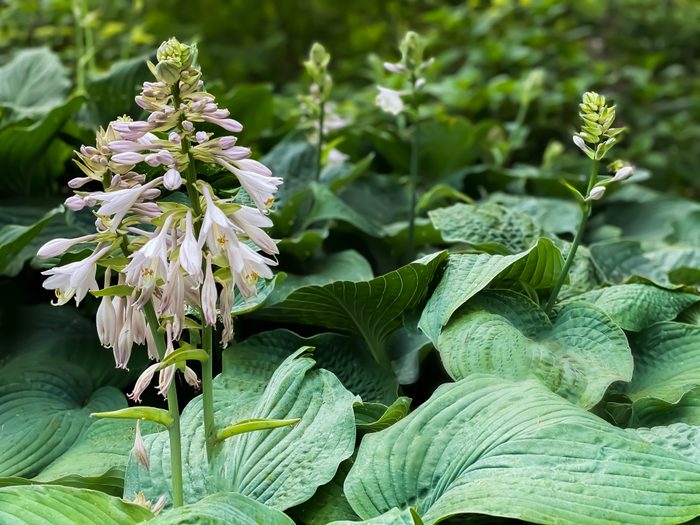
Hosta Growing Tips
Hostas add more than just a welcome splash of color to shade gardens; they also have major wildlife benefits. However, it can be challenging to incorporate the big, leafy, shade-loving perennial into a landscape. Help maximize your hosta’s potential with these tips
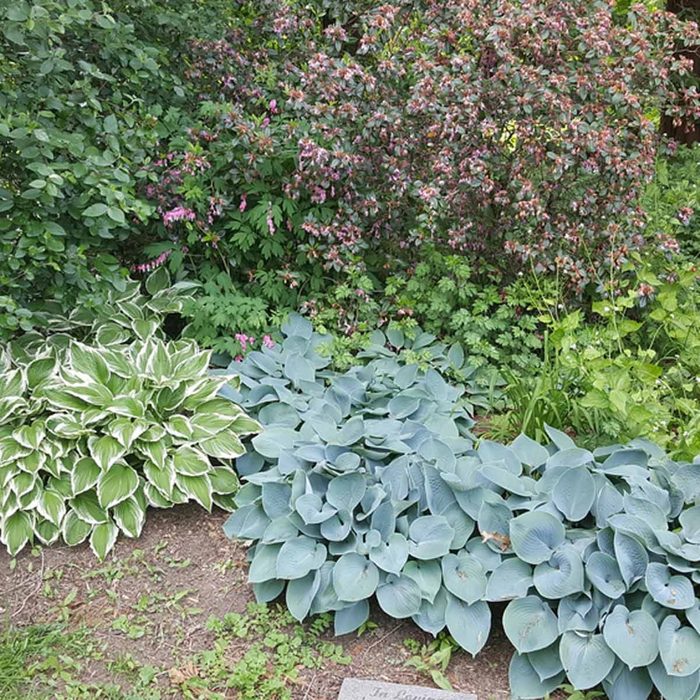
DO: Group Similar Varieties
Hostas are low maintenance landscape plants. They look good without much planning or upkeep. You can avoid a spotty look by clustering multiple specimens of the same cultivar. By massing them together, you give them more visual weight and they don’t end up looking like an afterthought.
Feel like flexing your green thumb? Here are some genius gardening hacks:
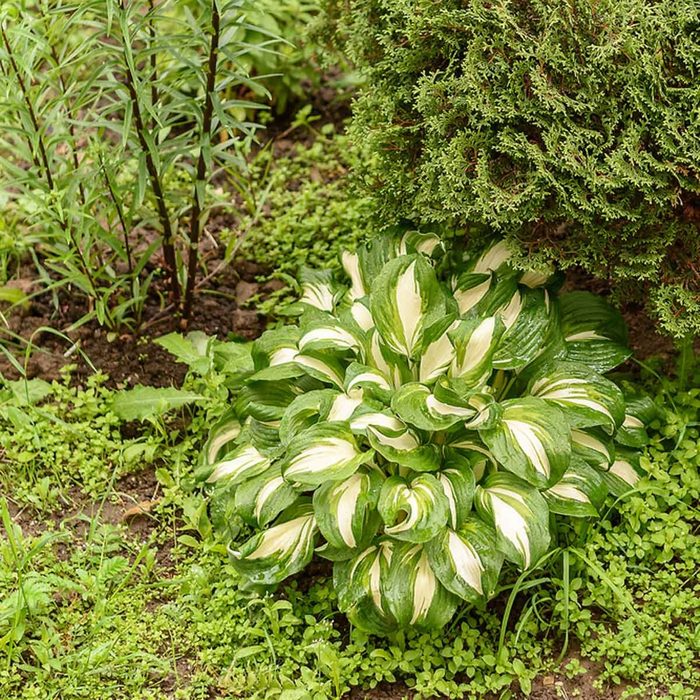
DON’T: Strand a Specimen
Plopping a solitary hosta in the middle of a bed by itself can make it look lonely and forlorn. This is especially apparent with this variegated hosta, which looks entirely out of place among more natural-looking companions.
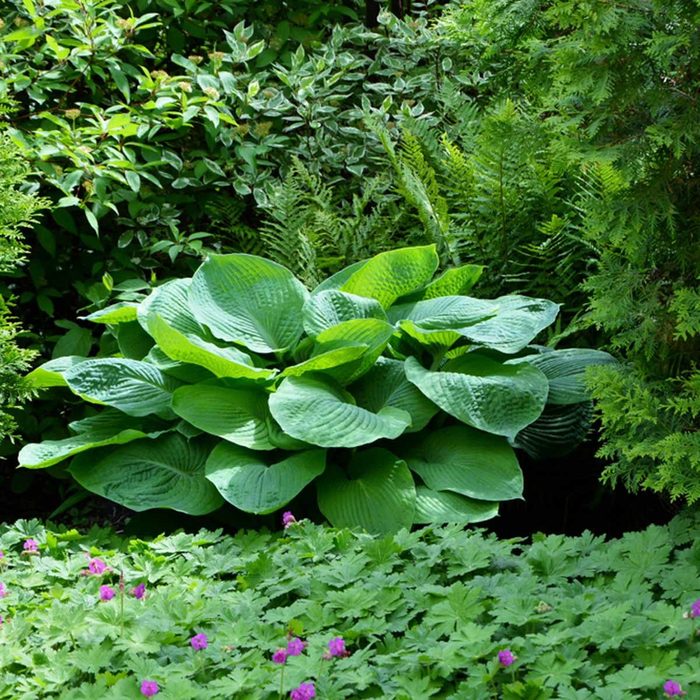
DO: Make It Look Intentional
There are exceptions to the previous rule. A hosta that’s big enough can be a solitary focal point and an exception to the clustering rule. Surround it with plenty of companions to create a stage for the plant. A solid-colored hosta makes a more natural-looking partner for other plants.
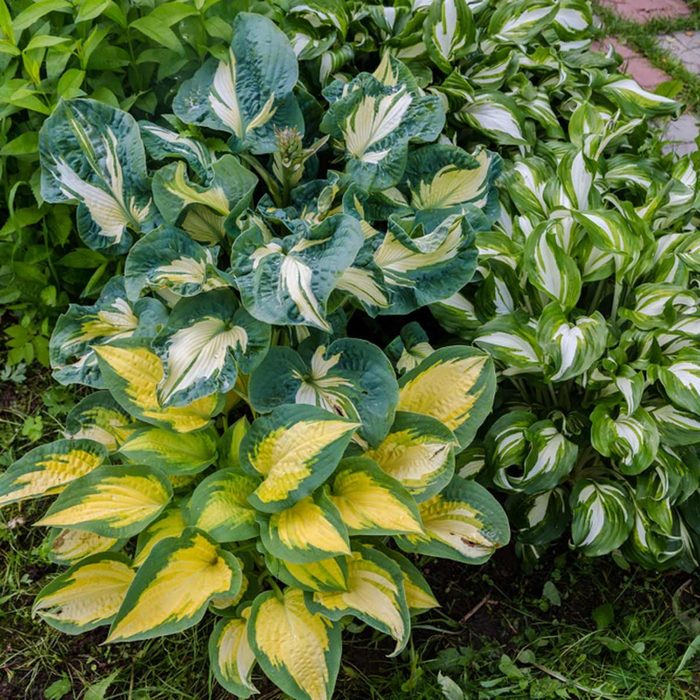
DON’T: Get Carried Away with Variegation
Gardeners love variegation for its ability to stand out and brighten a scene. But putting a bunch of different variegated varieties together looks busy and even chaotic. Better to pick one variety and repeat it for emphasis. If you’re looking for a pop of color in your yard, try adding a different colorful landscape plant, such as coral bells, near your hostas.
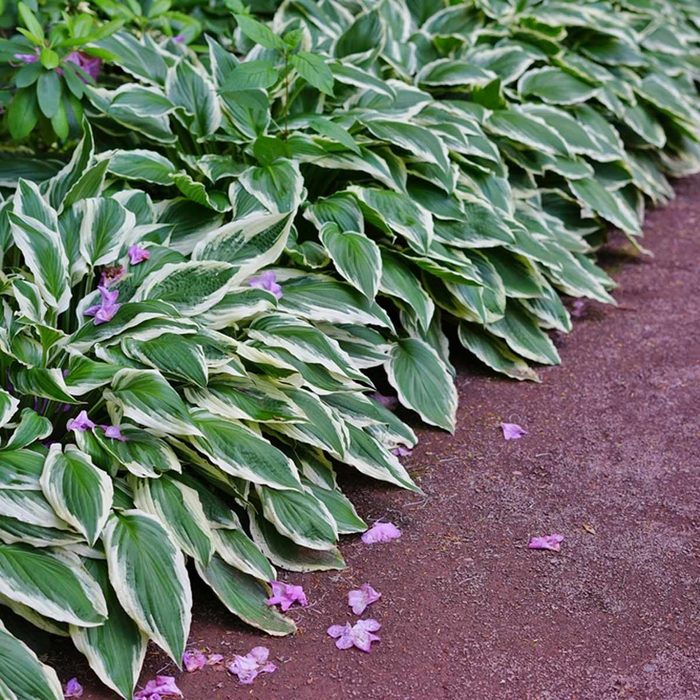
DO: Use Variegation Wisely
Variegated hosta is tailor-made for lining a path. It not only looks good, but serves a practical purpose because the variegated leaves are easier to spot at night, providing an element of safety.
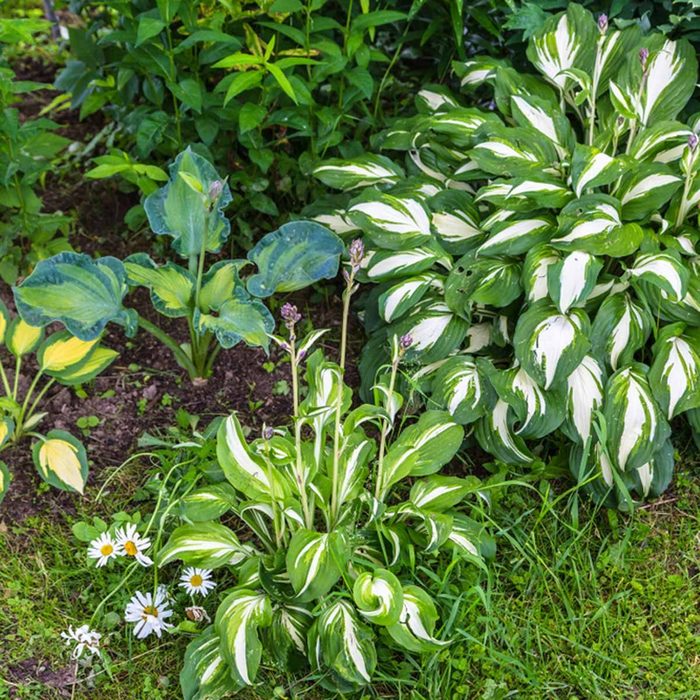
DON’T: Have One of Everything
Shoehorning into the garden one of every hosta variety you find results in a hodgepodge effect. It becomes a collector’s garden, which might suit a conservatory but doesn’t hold much promise for home gardeners. If you’re going to use multiple varieties, break them up into clusters of threes or fives so they carry more weight. The effect will be more pleasing.
Check out the top 10 hummingbird plants that grow in shade.
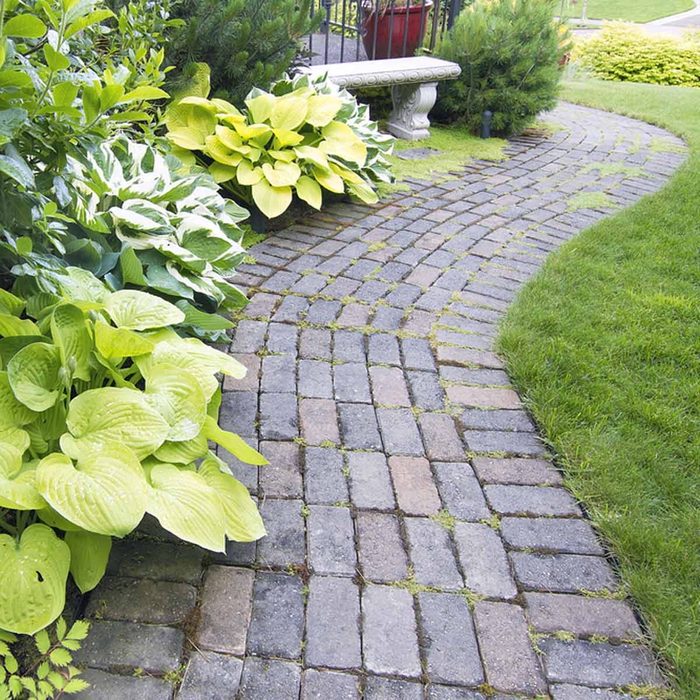
DO: Repeat Yourself
In addition to clustering identical varieties, you can repeat them. By repeating a specific variety (or color), you help tie the garden together.
Notice how the chartreuse hosta is repeated in this bed. The homeowner took it a step further by repeating the chartreuse color in the distance, albeit with a different species. This helps lead the eye from foreground to midground to background. Check out 10 gorgeous green flowers for your garden.
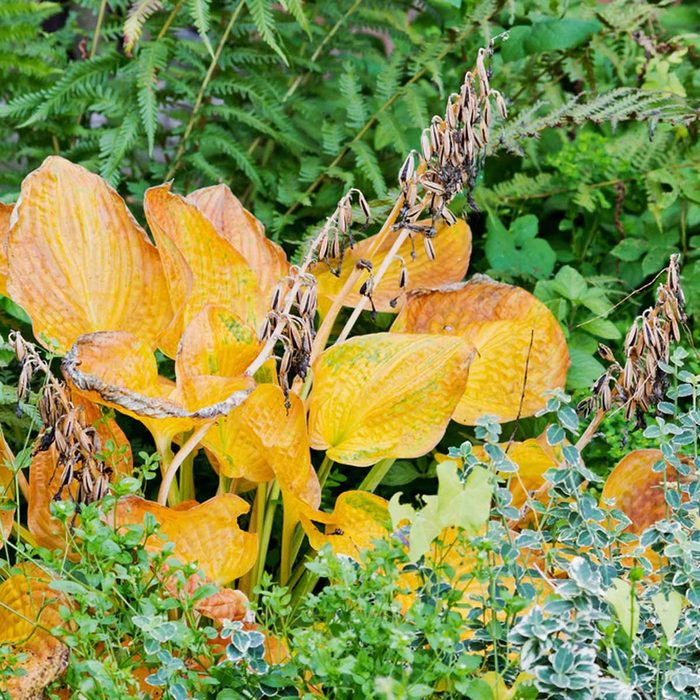
DON’T: Forget to Remove Dead Flower Stalks
Some gardeners actually remove hosta flowers as they’re forming, believing they take away from the foliage. Others leave them in place, especially on green hostas that can benefit from the added color.
Regardless, once the flowers are past their peak, be sure to cut them down. Many hostas have good fall color as they fade, but these dead flower stalks detract from the picture.
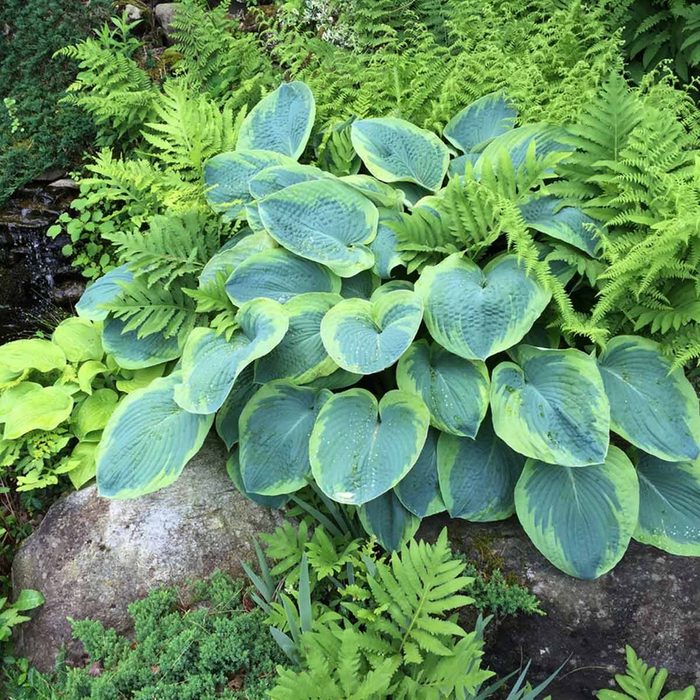
DO: Mix in Different Textures
Texture is important in a garden of foliage plants because there’s often less color to draw the eye. Broadleaf hostas have a strong presence, so pair them with something wispy for interesting textural contrast. Ferns are a natural choice, as they enjoy the same shady growing conditions as hostas.
Note how the color of the ferns matches the variegation of the hosta.
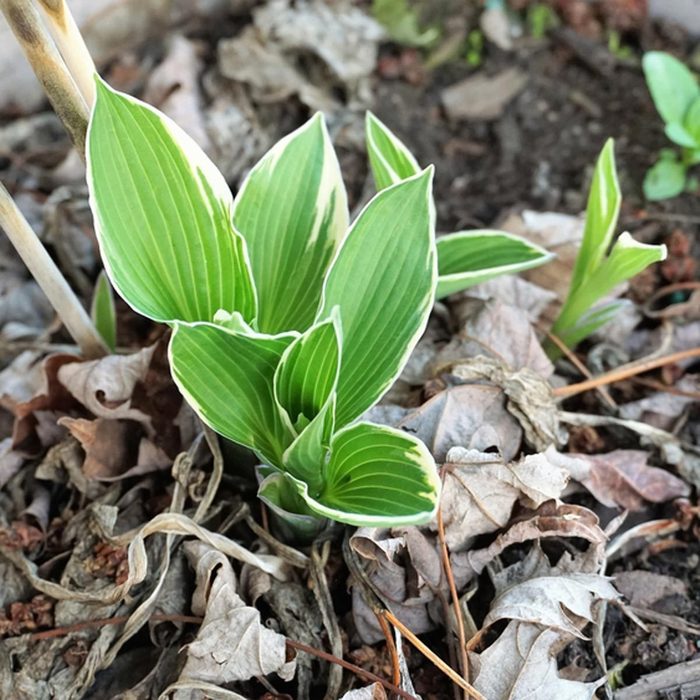
DON’T: Leave Debris Around Hostas
Dead leaves and old plant residue can be a hiding spot for foliage-destroying slugs. Clean up old debris every spring and replace it with sharp sand, crushed eggshells or pea gravel to discourage slugs.
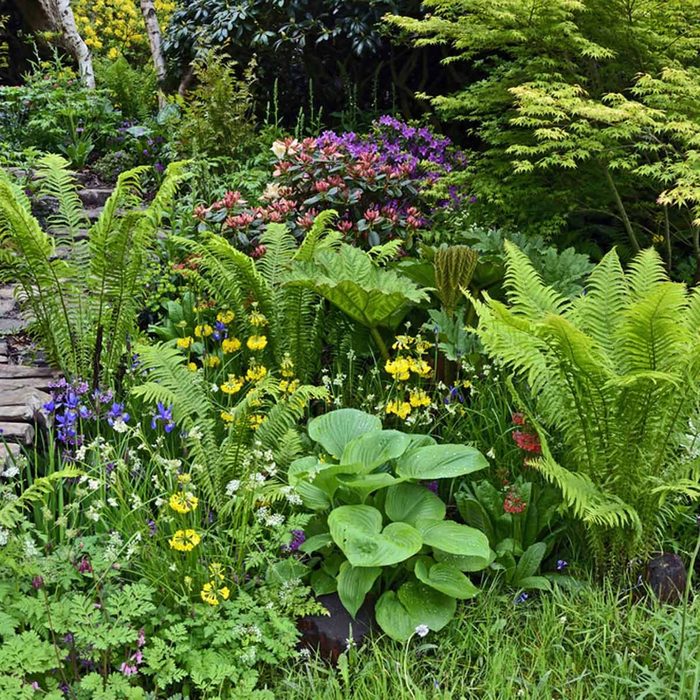
DO: Go Au Naturale
It’s possible to incorporate hostas seamlessly into the garden for a more natural look. The secret is moderation, using varieties that complement their companions rather than fighting for attention.
This hosta isn’t the tallest plant in the bed and it’s not the most colorful either. But it provides needed textural contrast to the ferns and the wispy flowers.
Check out the top 10 shrubs for shade gardens.
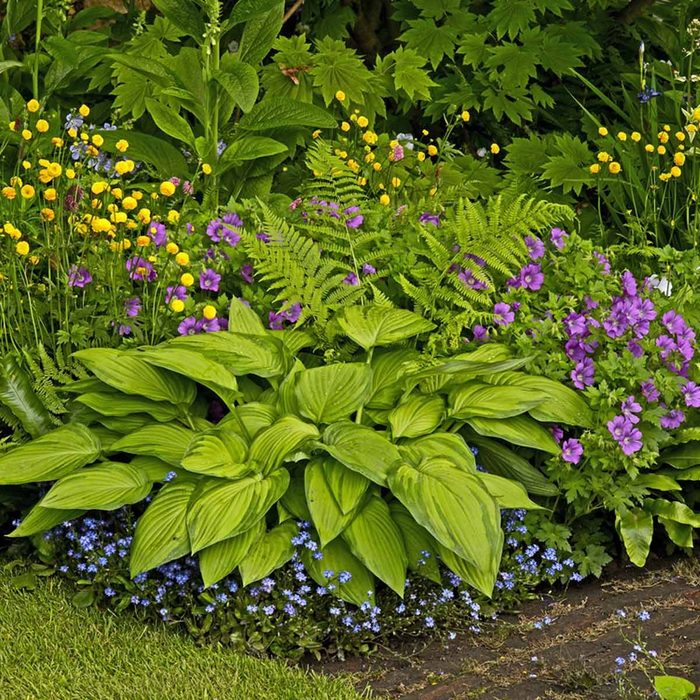
DO: Make it Lush
Hostas just don’t look at home in a barren garden. They belong in a lush, tropical getaway like this one. You can easily recreate the effect.
Pick a big, bold hosta as the centerpiece, back it up with other large broadleaf plants, then surround it with colorful flowering plants of various sizes and habits. It’s lush and full, but not crowded.
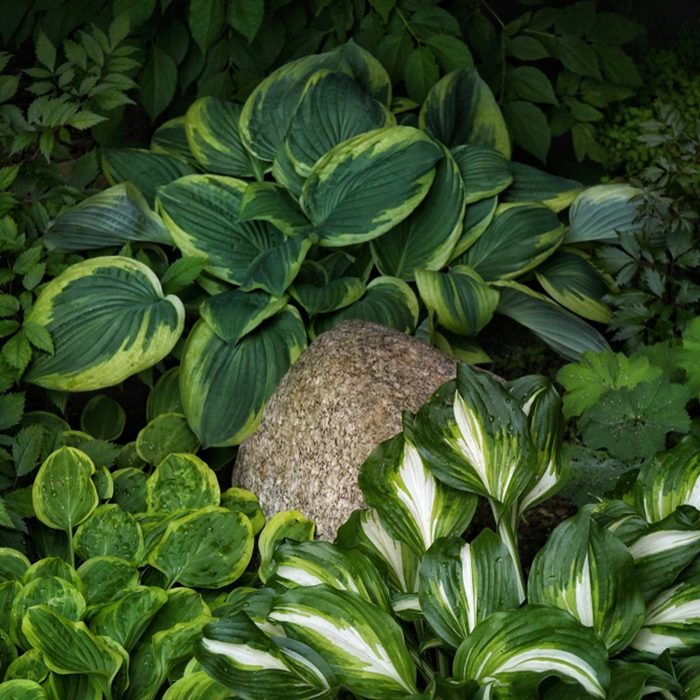
DO: Give the Eye a Place to Rest
Wall-to-wall plants can feel jungle-like. It’s fine if that’s the effect you’re after, but most people like a visual break from the intense plant mosaic. Provide that with rocks as seen here, with a log masquerading as a tree stump, or a piece of garden art.
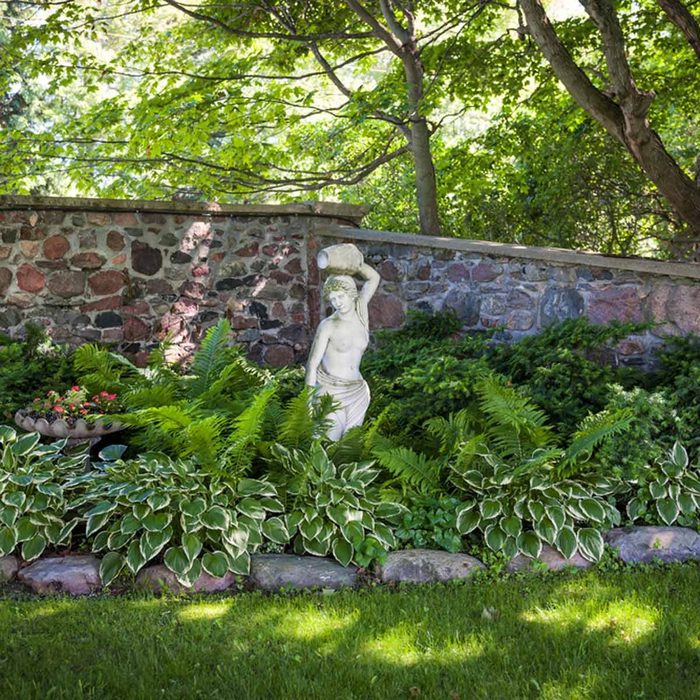
DO: Brighten Up the Shadows
The best way to brighten the shadows of your garden is to incorporate some variegated hostas into the setting. These hostas practically glow in the dark. Another option is to go with blue-green hostas and let the white flowers add a pop of light in the summer.
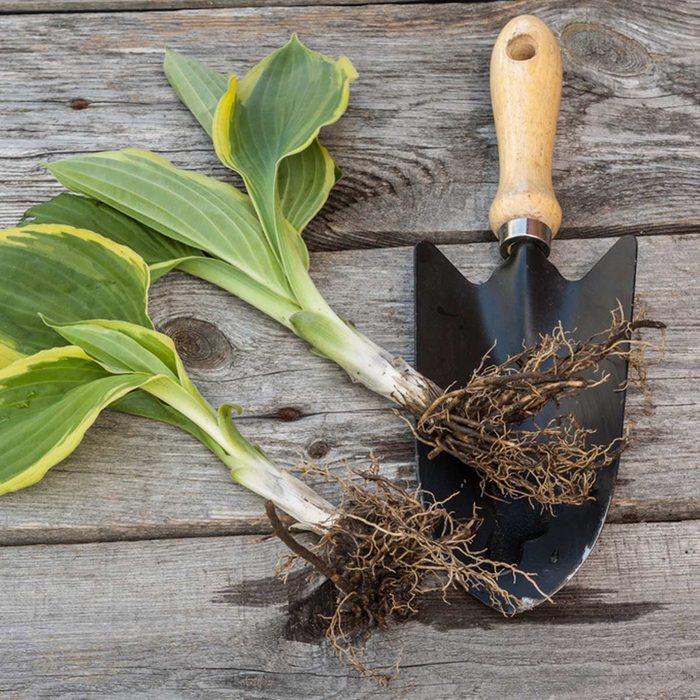
DON’T: Forget to Divide Hostas
Divide hostas every three or four years, preferably in spring as the foliage starts to emerge. You can also divide plants in early fall as long as there is time for plants to reestablish themselves before winter.
Dig up a clump and separate by hand. Large clumps may require the help of a sharp spade. Replant fist-sized sections (or individual plantlets as seen here), leaving enough space for plants to grow to their mature size.
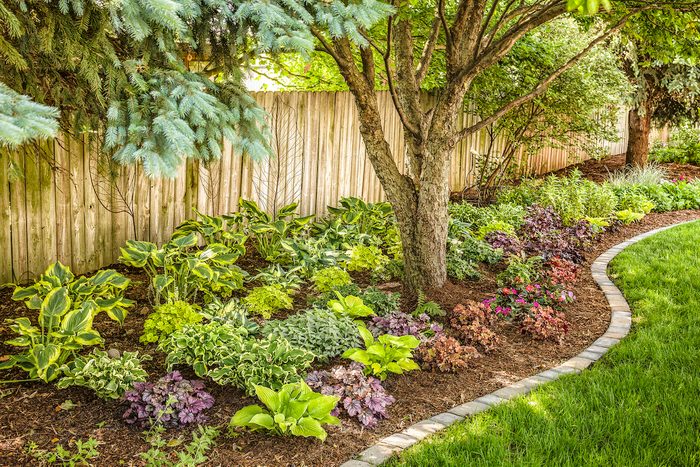
DO: Fertilize Hostas
To help your new hostas get established and help them thrive, apply a low-nitrogen, slow-release fertilizer to give them a growth spurt without damaging the roots.
